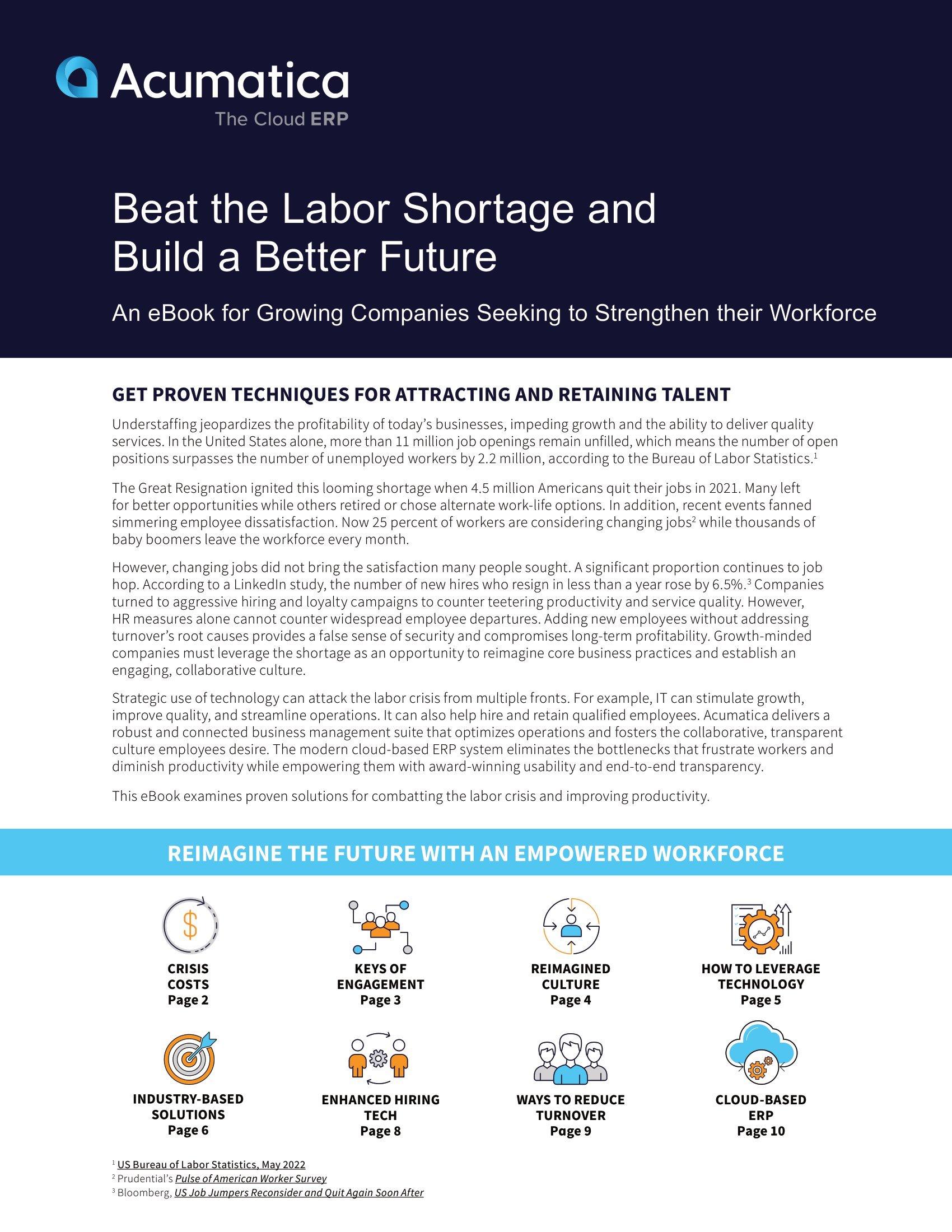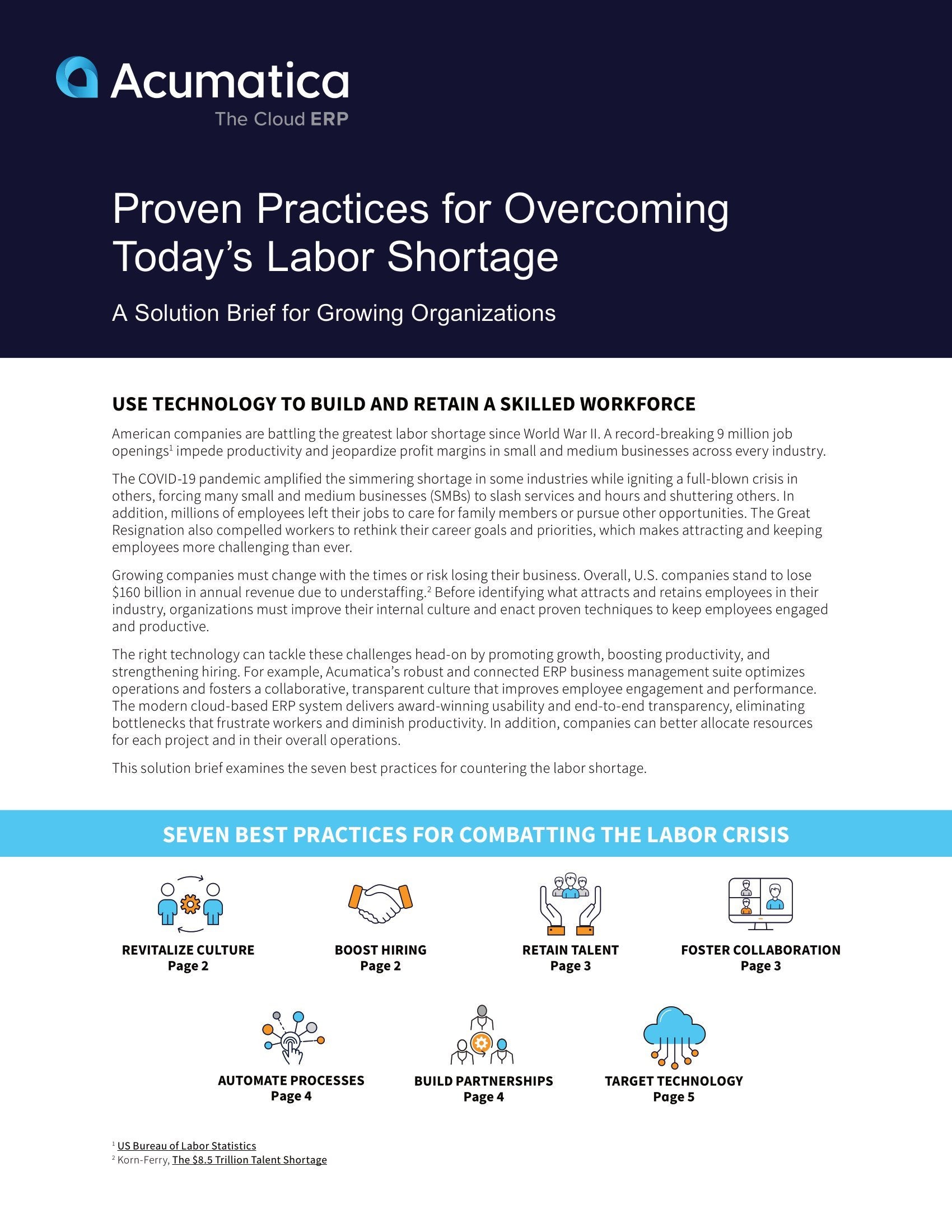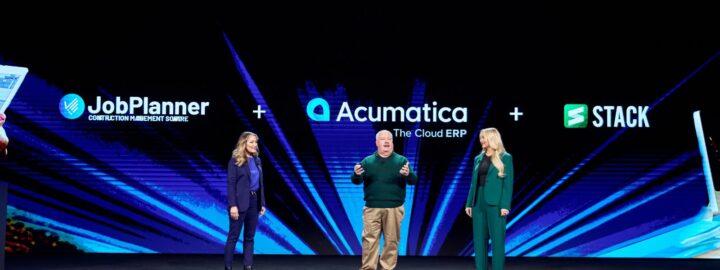
The continuing construction labor shortage has many in the construction industry scratching their heads. According to Associated Builders and Contractors (ABC), more than half a million workers were needed in 2023 to meet the demand for labor. With 6.1 million people unemployed (as of May 2023), surely the construction industry could attract, retain, and support a workforce large enough to fill these jobs, right?
Well, according to ABC Chief Economist Anirban Basu, it isn’t. Federal legislation, like the Infrastructure and Investment Job Act of 2021, has sparked a wave of megaprojects—like chip manufacturing plants, clean energy facilities, and infrastructure projects—that has exacerbated the need for qualified workers. But few people are signing up for the jobs, which means contractors’ already overextended labor forces are stretched even further.
An aging workforce is also causing problems. “With nearly 1 in 4 construction workers older than 55, retirements will continue to whittle away at the construction workforce,” Basu says. And, as older construction workers retire, the smaller pool of younger, less-skilled workers can’t make up the difference. In fact, one of the biggest pain points for the construction industry in getting the younger generation’s attention is competing with other industries that can offer remote or hybrid positions, higher salaries, and shorter, more flexible work hours.
Clearly, the construction labor shortage is an uphill battle, but there are ways companies can even out the playing field.
Let’s look at a few of these today.
Attracting and Retaining Younger Workers
Though construction is fundamental to the growth and progress of every country, many younger workers see it as a low-skill, low-paying career that doesn’t offer much in terms of advancement. Other perceived negatives include working outside, doing physically demanding labor, and having to keep inflexible hours.
While there is some truth to this, the construction industry offers diverse opportunities. Architects, engineers, carpenters, masons, and senior project managers top the list of jobs that require college degrees and offer competitive salaries. But, according to the National Association of Home Builders (NAHB), “the top 25% in most construction trades professions earn at least $60,000 annually. And you don’t need to follow the college path to get there.”
Construction professionals need to counter the perception that the industry is just about hammering nails and wearing hard hats. They should proactively spread the word through high schools, colleges, and universities that construction has a lot to offer in the short- and long-term, without as much student debt as a four-year degree.
Construction professionals can also create internship positions and apprenticeships to give younger workers an opportunity to learn the skills they need to succeed while whetting their appetite for more. They should be shown the tangible and intangible benefits of working in construction, such as:
- Earning a livable wage.
- Enjoying job security.
- Being part of a connected team.
- Actively making a difference in people’s lives.
Modern Construction Software May Do the Trick
The construction industry is waking up to the benefits of technology, such as 3D printing and drone surveying technology. They’re also recognizing that implementing modern construction software will give them the ability to streamline workflows, automate tasks, and connect employees via web-based devices—whether they’re in the office or at a job site. The result is a more efficient, collaborative team working from a single system and armed with real-time data for making quick project, budgeting, and compliance decisions.
For Gen Zers and Millennials, modern construction software is a huge incentive. As CE author Brian Poage writes, “Despite the industry’s reputation, some construction companies embrace technology and utilize modern solutions for daily reports, time tracking, payroll, communications and other crucial operations. The companies that use technology in this way are far more likely to attract and retain qualified young workers.”
Poage also suggests that construction companies should implement “an integrated tech stack,” which enables their various systems to work seamlessly with each other. A construction ERP solution, like Acumatica and our Acumatica Construction Management Software, is a great choice.
Acumatica’s Construction Software
With Acumatica, construction companies have a complete, mobile-enabled, cloud-based construction and accounting software solution. It includes financials, job cost accounting, project management, payroll, inventory, order management, service management, equipment management, route optimization, CRM, and mobile capabilities, and it offers a real-time view of operations anytime, anywhere. These comprehensive, easy to use features will attract younger workers, who expect fast, efficient technology that will make their jobs easier, reduce burnout, and allow them to achieve a true work–life balance.
Construction is a fulfilling career that lends itself to any person who is willing to learn and excited to advance, and Acumatica’s construction software can help attract, retain, and support these workers. As Acumatica’s eBook, “Beat the Labor Shortage and Build a Better Future,” notes:
Strategic use of technology can attack the labor crisis from multiple fronts. For example, IT can stimulate growth, improve quality, and streamline operations. It can also help hire and retain qualified employees. Acumatica delivers a robust and connected business management suite that optimizes operations and fosters the collaborative, transparent culture employees desire. The modern cloud-based ERP system eliminates the bottlenecks that frustrate workers and diminish productivity while empowering them with award-winning usability and end-to-end transparency.
 Canada (English)
Canada (English)
 Colombia
Colombia
 Caribbean and Puerto Rico
Caribbean and Puerto Rico
 Ecuador
Ecuador
 India
India
 Indonesia
Indonesia
 Ireland
Ireland
 Malaysia
Malaysia
 Mexico
Mexico
 Panama
Panama
 Peru
Peru
 Philippines
Philippines
 Singapore
Singapore
 South Africa
South Africa
 Sri Lanka
Sri Lanka
 Thailand
Thailand
 United Kingdom
United Kingdom
 United States
United States













